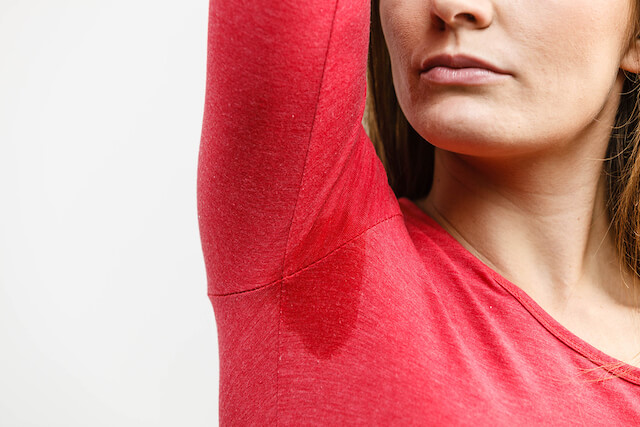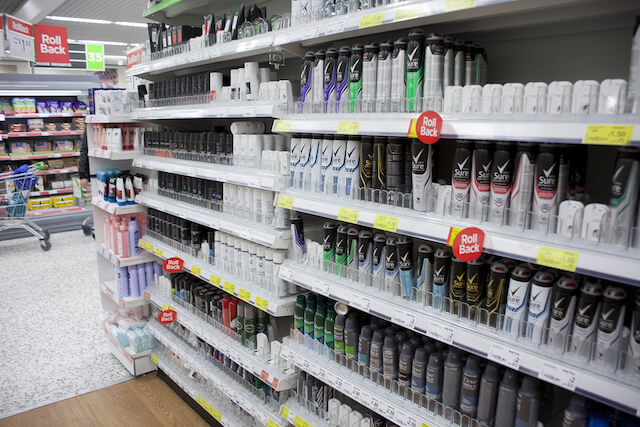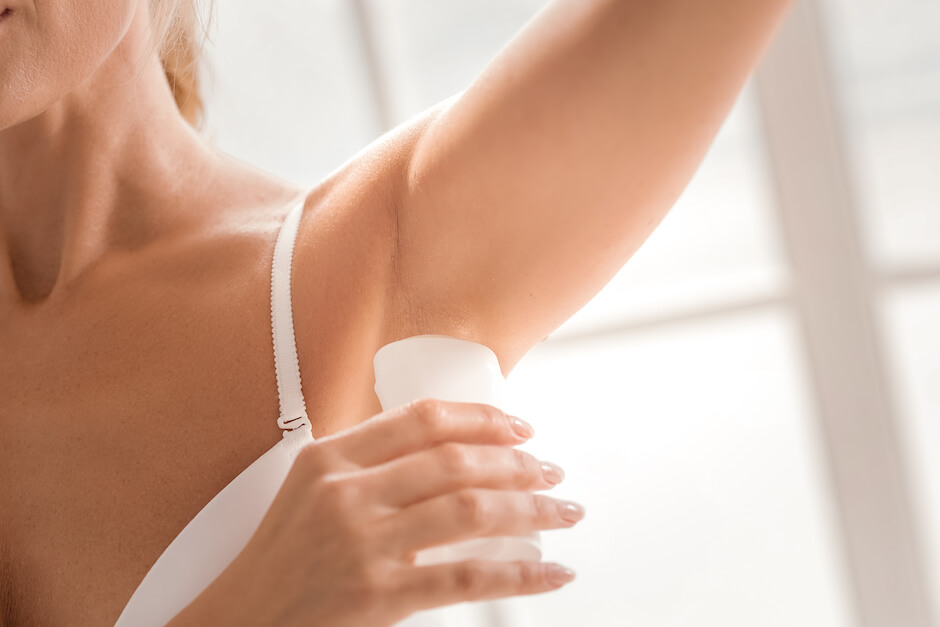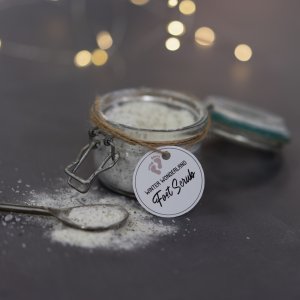The statistics are alarming: According to the Environmental Working Group, the average adult exposes him or herself to over 126 chemicals each day. And that’s just from our personal care products. To top it off, many chemicals include “known or probable” carcinogens and reproductive and developmental toxins. One of the most dangerous substances we put on our bodies every single day is antiperspirant deodorant. Here are 8 toxins in your deodorant to look out for.
Deodorant vs. Antiperspirant
Let’s first talk about the difference between deodorant and antiperspirant. The purpose of deodorant is to combat body odor. What many people don’t realize is that our sweat actually does not have an odor. Body odor occurs when sweat mixes with bacteria on our skin. Deodorants work by combatting bacteria, but they don’t actually prevent sweating.
Antiperspirants, on the other hand, contain ingredients to prevent sweating. The active ingredient in antiperspirants is aluminum. When you sweat, the aluminum precipitates into a gel-like substance that blocks sweat ducts.

Okay people, sweating is a natural biological process of the body. Not only do our bodies expel toxins through sweating, but sweating also helps balance electrolytes in the body. This is important for good kidney health as well as maintaining a healthy blood volume.
While sweating may be undesirable, it is an important biological process, and we create a health risk by continually preventing our bodies from sweating through the use of antiperspirants.
4 Toxins in Deodorant
Aluminum
We’ve already touched on the risks of using aluminum-based antiperspirants that block sweat glands. But that’s not the only risk associated with aluminum. Studies show elevated concentrations of aluminum in breast tissue from women afflicted by breast cancer. While scientists debate whether Al causes cancer or is just stored in cancerous tumors, it is clear that women with breast cancer have elevated levels of Al.
Additionally, aluminum is classified as a metalloestrogen, which is a synthetic xenoestrogen. Xenoestrogens cause endocrine disruption by mimicking natural estrogen in the body. This may also increase the risk of breast cancer and cysts.
Aluminum also contributes to neurological disruptions, including decreased attention, learning, and memory. Scientists have found elevated aluminum content in the brains of persons with Alzheimer’s disease.
Parabens
Parabens refers to a class of compounds used as preservatives in many cosmetic products, including deodorants. These known endocrine disruptors are easily absorbed by human tissue. Like aluminum, elevated levels of parabens have been discovered in breast tumors.

Triclosan
Triclosan is an antimicrobial agent. In 2016, the FDA banned the use of triclosan in soap products. However, triclosan still remains in other personal care products, such as toothpaste, mouthwash, hand sanitizer, surgical soaps, and, you guessed it, deodorants. Triclosan readily absorbs through the skin into various tissues and fluids. Among the long list of risks associated with this toxin are: allergies and asthma, decreased cardiovascular function, cancer development, reproductive and developmental defects, impaired immune function, and allergic skin reactions. No, thank you.
Fragrance
“Fragrance” is actually a very ambiguous term. The FDA permits U.S. manufacturers to legally hide hundreds of synthetic chemicals in this one word without revealing what those ingredients are. In truth, “fragrance” can include various petrochemicals and phthalates, which may cause developmental delays and allergic diseases.
Is that all the toxins in deodorant?
In recent years, antiperspirant manufacturers have actually cleaned up their act. Aluminum, parabens, triclosan, and “fragrance” are a handful of the most common risky ingredients found in deodorants and antiperspirants today. But be aware that there may be other ingredients to watch out for.
- Butanes (in aerosol deodorants)
- Formaldehyde
- Triethanolamine (TEA) and diethanolamine (DEA)
- Propylene glycol
- Phthalates
Looking for a healthier alternative to chemical deodorants? Try my simple Homemade Deodorant recipe!












